#homologation cars
Note
Which cars are most bisexual?
Ever get the chilling feeling that you made a grave mistake long ago and you are about to reap what you sowed?
In short, I hit some of my friends up to ask for help.
In random alphabetical order:
@jettacar suggested the fourth gen Nissan Quest:

"It's like, no one really bought these. They aren't particularly common. But also, there's no one type of person that buys a car like this. Rationality would have you believe only families are buying this, because it's a giant minivan - but i can't immediately think of another car with a wider variety of types of people that own them right now (excluding cars that just sell incredibly well)"
Unfortunately, that made the conversation derail into minivan talk.

Up next, @rabidragon suggested the Fiat Multipla, due to its peculiar seating arrangement of two rows of three seats:
"3 seats in the front for you and your man and your woman".
Indeed, the peculiar thing about the Multipla is its row of three full-sized seats in front (many old cars had a front bench with some having three lap belts, but the Three Individual Front Seats club is as exclusive as it is devoid of prestige) and the many peculiarities that it caused, like off-center pretty much everything (mirror included) because the driver is further to the side than usual and where most of the centered things go there's now a passenger who would like to be.
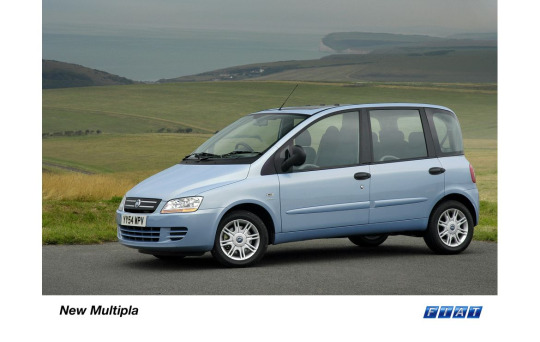
But the even more peculiar thing about the Multipla is how spectacularly ugly it is. It's one of the few cars I've ever actually seen that manages to be full-on ugly not just outside but inside. Click on any list of ugliest cars in the world and if it doesn't contain the Multipla I can promise you that list was created by a machine that has since been physically shot.
And if you're thinking "Well, it's not bad enough to warrant that hyperbole" - you are looking at the second generation. This is the pretty one. I put the first one and its interior at the end of the post under a read more because I genuinely did not want to be responsible for you seeing it.
I noted that Honda's FR-V managed the same seating layout with downright smart looks inside and out...

...and unfortunately that made the conversation derail into engine swap regulation loopholes.

Finally, @chevyventure suggested multiple. In (roughly) his words:
First generation Mazda 3
"It's a hatchback, good for many different uses - and Mazda is a little silly, charming and off the beaten path (if you were getting a Japanese hatchback you'd probably get a Toyota or a Honda) with a cute lil' smile like a Miata"
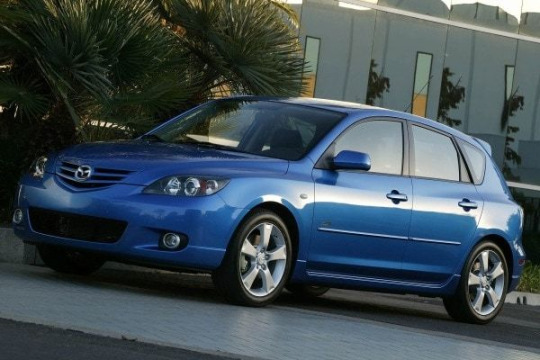
1988 Volvo 240 Wagon
"Volvos are frequent hand me downs from family like all the cool childhood trauma the LGBTQs get"
[Editor's Note: bro.]

Renault Clio
"It's peak hotness while also being cute in its own way, not necessarily preferring a masculine or feminine audience. I've never seen an ad for a Clio before, but if my assumptions about the car market are correct my guess is the normal one is kinda marketed towards women"
[Editor's note: So, I wanted to check that, so I just looked up "Renault Clio ad". These were the first two ads I found.
youtube
youtube
So yeah. I feel it qualifies.]
Unfortunately, talking about the Clio made the conversation derail into TWR's involvement in- oh wait, you're not gonna know about that Clio variant, are you.
So, many racing series can only be entered with racecars based on some production car - which is great for manufacturers, because they get to advertise their brand and one of their models simultaneously! But since there are rules on how much of the base car can be changed and how much of it must be retained, the stricter they are the more what you want as a base for your racecar is something high performance. So when you want to go racing with a dinky little thing like, say, first car to ever use plastic bumpers and only car to ever be called Renault Le Car in America Renault 5...
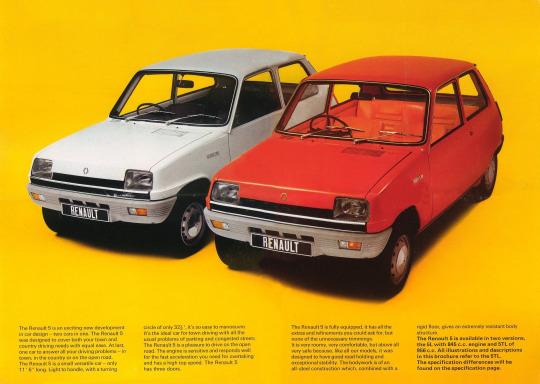
...what you are going to want to do is what, among many others, Toyota did with the Yaris GR and Lancia did with the Delta: the homologation special. Basically, you make a special version of the car with the characteristics you'd want in racing, sell enough to clear the rules's bar for "production car" (or at least, convince the officials you've done that), and go racing with that.
So Renault did that to the 5 and hit up one Marcello Gandini to redesign it around the changes. You know, Marcello Gandini, guy most famous for designing mid-engined Ferrari-slayers:

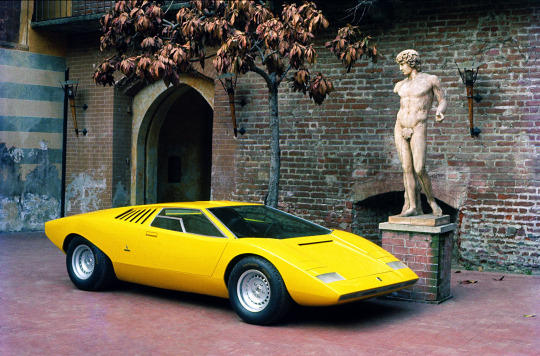
Which makes sense, because the Renault 5 Turbo was a mid-engined Ferrari slayer. It was faster than the top-of-the-line Ferrari both in acceleration and in cornering speed. This thing.
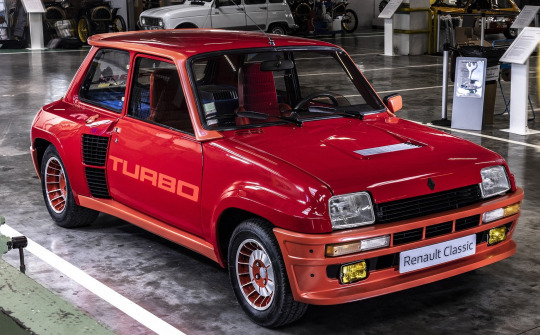

(sidenote: The Interior. end of sidenote)


Well, twenty years on, some legend at Renault thought "You know what? We were onto something with that. Let's do that again but HARDER."
Presumably, into the headquarters of Tom Walkinshaw Racing, a racing team that developed for Aston Martin, F1 teams, and made Jaguar's Fastest Production Car Ever record holder, and of course a fuckton of the most exciting racecars around, showed up uninvited that Renault madman saying "Y'all wanna work on something REAL prestigious?" before chucking them the keys to a second generation Clio and walking off with a "Don't thank me".

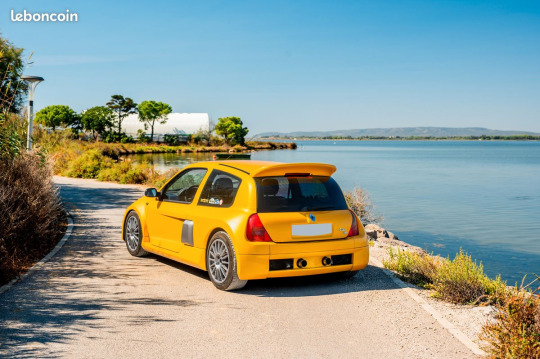
The result was the Clio V6, most notable for HAVING A FUCKING V6 WHERE THE BACKSEATS WERE.
This car is genuinely incredible. Like, you see it and you go "Ooh ahh, the Clio V6!" and you look inside to see, you know, the huge V6 compartment thing and you see the interior and you realize this thing cost good sportscar money and when you got in it was a fucking Clio.

Mental stuff- wait shit this post was about bisexual cars wasn't it? How did the conversation derail like this? I swear this never happens.
Well, I guess it's time for my pick.
Personally, chatting with Mr. Venture about hatchbacks, I realized that I cannot think of a more "girls car" than a Fiat 500 Cabriolet (which actually is called 500C) and cannot think of a more "boys car" than a Fiat 500 Abarth (which actually is called Abarth 500)...


...so how about the Fiat 500 Cabriolet Abarth?
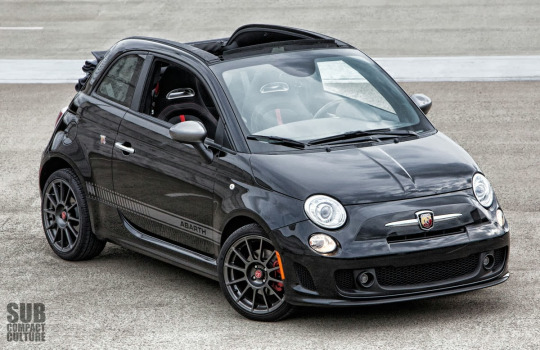
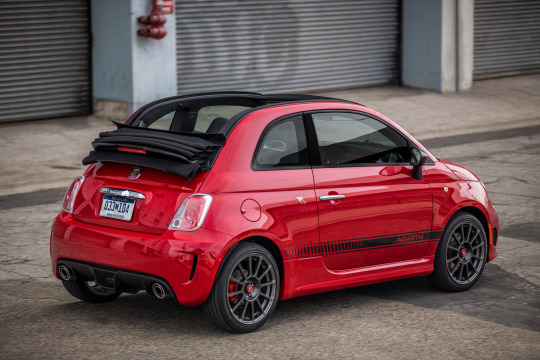


It actually isn't called that but I think you could piece that together.
As though a spoiler on a canvas roof wasn't weird enough, it contains the third brake light, probably making this the only car out there in which it can change position during use. Although I assure you, you're not gonna be thinking about that when driving it. Thing's a RIOT.
But honestly, that wasn't what I started off wanting to answer.
So, last but most definitely not least, I candidate my first, gut-reaction answer: the NA Mazda Miata.

See, to me bisexuality (and pansexuality, but awareness of the nuances between them is so low they may as well be picked over flag preference) is someone appreciating all the beauty in the world, seeing no point in gatekeeping themselves out of half of it. And is that not what a spider is about? Is it not about saying "this world we're in is so full of beauty, who would rather blind themselves to half of it?".
And look at the damn thing. It's bursting with exactly the kind of joie de vivre one would associate with such sentiment. It oozes enthusiastic curiosity. OwO what's this?: The Car.
Also, just look at this picture.

It can drift. IT CAN WINK. IT CAN WINK MID-DRIFT.
I mean, what more than this degree of flirtatious playfulness can you possibly need to be convinced?

Links in blue are posts of mine explaining the words in question - if you liked this post, you might like those!
...
...are they gone? I think they're gone.
The Multipla pictures are down here. Go on then if you're gonna, you sick fuck.


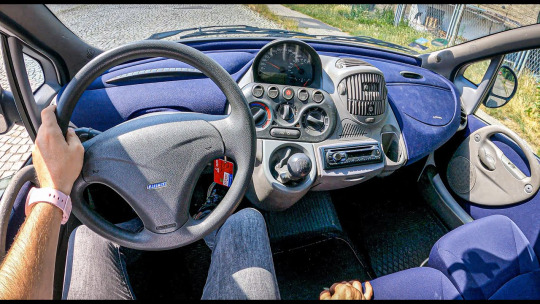
If you have dealt with traumatic tumor-related experiences and seeing that dashboard caused you genuine discomfort, well, do not say I didn't warn you.
#lgbt cars#nissan quest#fiat multipla#honda fr-v#mazda 3#volvo 240#renault clio#homologation cars#renault 5 turbo#twr#renault clio V6#fiat 500C#abarth 500C#na mazda miata
108 notes
·
View notes
Text
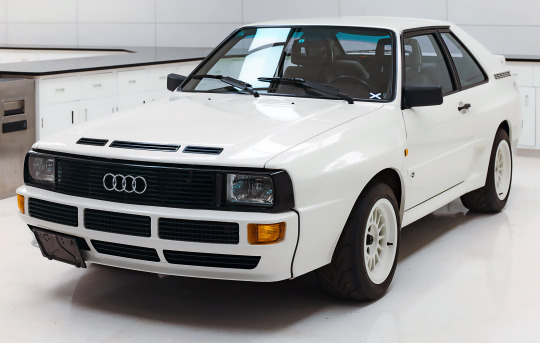




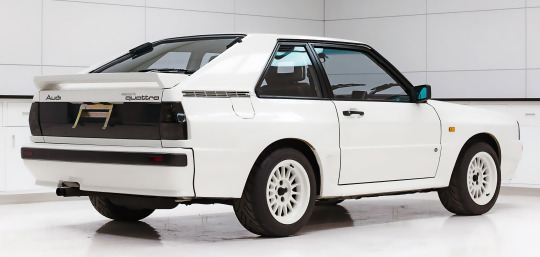
Audi Sport Quattro, 1984. One of 214 short wheelbase Quattros made and one of very few sold new in Japan is to be offered at auction in Arizona. The car was owned by a Japanese collector and has traveled just 8,806km (5,472 miles) from new.
auction listing
#Audi#Audi Sport Quattro#Audi Quattro#homologation#1984#5 cylinder#trubocharged#all heel drive#rally car#WRC#short wheelbase#cars for sale#auction#RM Sotheby's
977 notes
·
View notes
Text

Audi Sport quattro
#cars#car#autos#classic cars#automobiles#audi#quattro#audi quattro#audi sport quattro#group b#homologation
85 notes
·
View notes
Text


LANCIA DELTA HF integrale 16V
Photos Taken in 2023
2 notes
·
View notes
Text
my sister spent a lot of this summer insisting that the regs are tighter and the racing is closer and that red bull really did suffer the consequences of their cheating but this looks like another "regs decide the dominant era" rut f1 has wedged themselves into. this time featuring a bowl of angry uncooked oatmeal slop they dropped into the seat of the car 3rd time in a row
#f1 rly is just domination era after domination era with a season or two of maybe two teammates battling for a trophy#two teams if you're lucky#we just kinda put up with it because previously the people had a kinda charm or personality or hobbies or an existence outside of#.... whatever poor excuse of a ''racing'' series f1 is#they want the competition of homologated series where there arent really midfields and the winner truly can be switched up most every race#but they cant do that because non-homologation is what draws in the teams. so the only option is closing the budget gap#and thats not fucking working not to imply the fia is good at making decisions or rulings that work in the first place#just kinda sad innit. theyre fast cars. they just dont get the chance to race one another.#my sister is a HUGE fan of the oatmeal and she went to bed 20 laps in#that is saying something abt the series#hell i used to go to bed circa 2020 when it was clear lew was ahead cos god love him i wasnt interested#in staying up at 1-6am to watch not-racing happen#all this to say im so glad i branched out to other series and i encourage others to as well#this is the perfect time
6 notes
·
View notes
Text
TMS logistics is a top-notch relocation company in Dubai, Carnet De Passage Dubai and Short term storage Dubai that provides well-structured and secure warehouse moving Dubai that makes relocation of complex goods easy. TMS logistics provide the facility of Domestic relocation Dubai for easy vehicle relocation with proper paperwork on the basis of solid ID proof like passport.
0 notes
Text
Car Homologation Service Market Research Report: Key Drivers and Restraints, Opportunities, Industry Share & Trend Analysis Report to 2028
This report provides a comprehensive analysis of current Global Car Homologation Service Market based on segmented types and downstream applications. Major product development trends are discussed under major downstream segment scenario.This report also focuses on major driving factors and inhibitors that affect the market and competitive landscape. Global and regional leading players in the Car Homologation Service industry are profiled in a detailed way, with sales data and market share info. This report also includes global and regional market size and forecast, drill-down to top 20 economies.
According to this survey, the global Car Homologation Service market is estimated to have reached $ xx million in 2020, and projected to grow at a CAGR of xx% to $ xx million by 2028.
Get Request Sample Report @ https://martresearch.com/contact/request-sample/3/16923
Covid-19 pandemic has impacted the supply and demand status for many industries along the supply chain. Global Car Homologation Service Market Status and Forecast 2022-2028 report makes a brilliant attempt to unveil key opportunities available in the global Car Homologation Service market under the covid-19 impact to help readers in achieving a better market position. No matter the client is industry insider, potential entrant or investor, the report will provide useful data and information.
The Global Car Homologation Service Market has been exhibited in detail in the following chapters
Chapter 1 displays the basic product introduction and market overview.
Chapter 2 provides the competition landscape of global Car Homologation Service industry.
Chapter 3 provides the market analysis by type and by region
Chapter 4 provides the market analysis by application and by region
Chapter 5-10 presents regional and country market size and forecast, under the context of market drivers and inhibitors analysis.
Chapter 11 analyses the supply chain, including process chart introduction, upstream key raw material and cost analysis, distributor and downstream buyer analysis.
Chapter 12 provides the market forecast by type and by application
Chapter 13 provides the market forecast by region
Chapter 14 profies global leading players with their revenue, market share, profit margin, major product portfolio and SWOT analysis.
Chapter 15 conclusions
Segmented by Type
l In House Services
l Outsourced Services
Segmented by Application
l Passenger Vehicle
l Commercial Vehicle
Get Buying Report @ https://martresearch.com/contact/enquiry/3/16923
Segmented by Country
North America
United States
Canada
Mexico
Europe
Germany
France
UK
Italy
Russia
Spain
Asia Pacific
China
Japan
Korea
Southeast Asia
India
Australasia
Central & South America
Brazil
Argentina
Colombia
Middle East & Africa
Iran
Israel
Turkey
South Africa
Saudi Arabia
Get Discount Report @ https://martresearch.com/contact/discount/3/16923
Key manufacturers included in this survey
l TÜV SÜD Group
l SGS Group
l MISTRAS Group, Inc.
l Lloyd’s Register Group Limited
l Intertek Group PLC
l Formel D
l Eurofins Scientific
l EKRA SE
l Bureau Veritas S.A.
l Applus Services S. A.
Contact Us:-
+1-857-300-1122
0 notes
Text
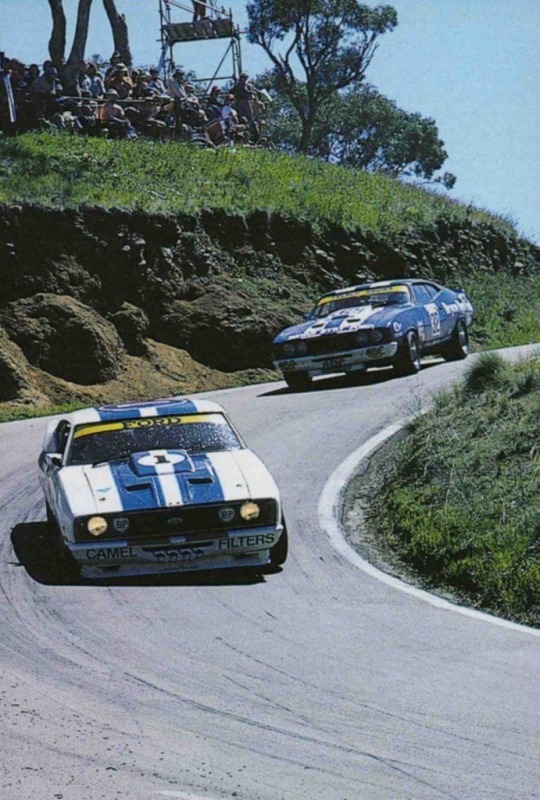
The XC Ford Falcon Cobra GS Hardtop was launched in August 1978. Each of the XC Cobras were given there own serial number and a build number plaque from 1 to 400 which was placed on the dashboard. From number 2 to 31 were know as 'Option 97' {also known as Bathurst Cobras}, which were fitted with optional parts for homologation to compete in the Australian Touring Car Championship. Including the 5.8 Litre 351 V8, a larger radiator with twin thermo fans, transmission oil cooler, front suspension tower braces, reworked wheel housings and racing seats. They were identified by a large rear-opening bonnet scoop. The remaining 370 standard Cobras, 170 were equipped with the 351 (5.8-litre 162kW/429Nm) and the next 200 with the 302 (4.9-litre 151kW/364Nm). All featured “nostril” bonnet scoops and spoilers, Globe Bathurst 15x7 alloy wheels, four-wheel disc brakes and a limited slip diff.Price when new for a 1978 XC Cobra GS 5.8 Litre 351ci V8 four speed manual Hardtop: $10.100.00Released: August 1978Total produced: 400

#cobra#falcon cobra#xc#xc falcon#xc cobra#falcon hardtop#hardtop#falcon coupe#coupe#xc hardtop#muscle car#muscle cars#musclecar#musclecars#muscle#australian muscle#classic#classic car#kustom kulture#kustomblr#kustom#custom#custom car#racecar#falcon#car#cars#bathurst#touring car#ford
356 notes
·
View notes
Text

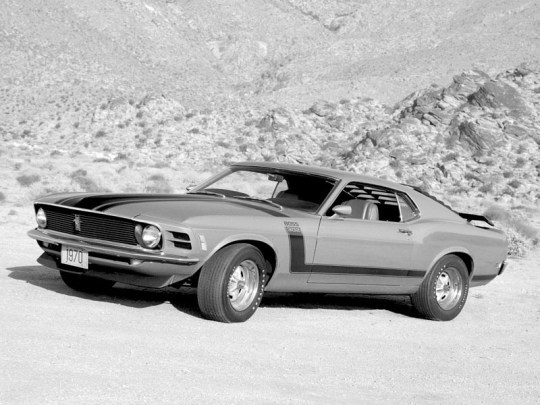
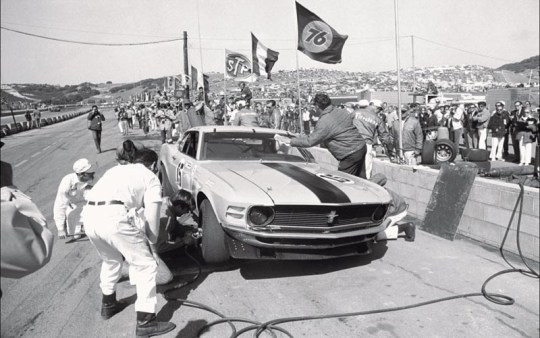
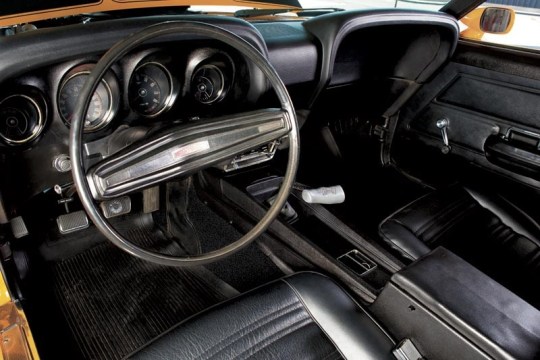
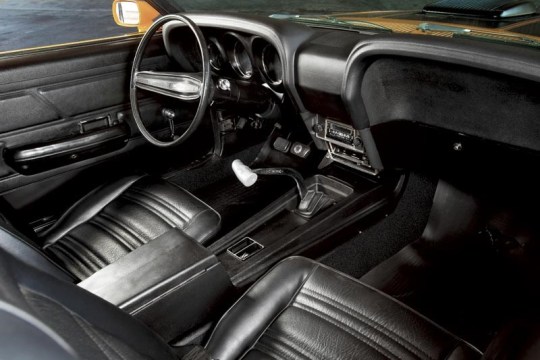



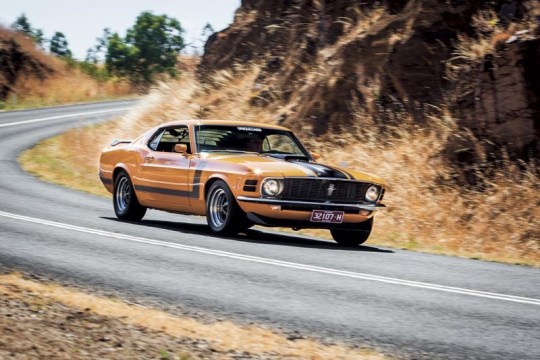

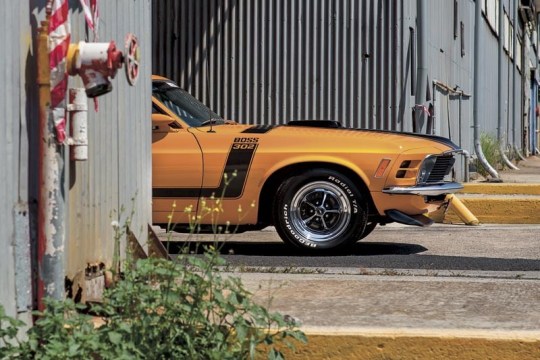
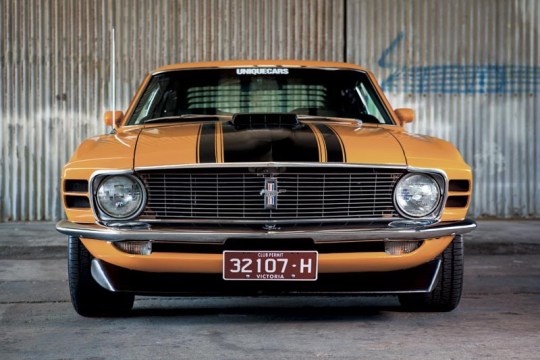

FORD MUSTANG BOSS 302
BOSS-A-NOVA!
They called it The Boss and for two short years it ruled the muscle car scene in the US, establishing itself as one of the greatest road and race cars of the era. Now, it’s one of the most collectible.
In 1960s US street lingo, if something was ‘boss’ it was cool, tough, the best. And the 1969 Boss 302 Mustang wore its badge with pride. It launched just four and a half years after the first Mustang was revealed to critical acclaim and record sales. Yearly updates to keep Mustang fresh in the face of tough new challengers from General Motors and Chrysler (particularly the Camaro) resulted in the once lean and pretty ’Stang muscling up, both in body shape and under-bonnet brawn, and the 1969-70 Boss models were the zenith of Mustang styling.
Thereafter, Mustangs became increasingly bloated and anaemic as the 1970s fuel crisis and stricter pollution laws cut horsepower and stylists lost their way; the rippling flanks and thrusting nose of the late 60s/early 70s cars gave way to boxy, bland designs. That early look would not be recaptured until 2005, when new Mustangs were given retro styling.
The Boss 302 was launched at the same time as its big-block brother, the Boss 429. Both were positioned as competition specials; Ford wanted to homologate its 302-cuber for Trans-Am and the 429ci monster for NASCAR. In fact, Ford went wild with engines between 1969-70, offering nine V8s – the ‘economy’ 302, 351 Windsor, 351 Cleveland, 390, 428 Cobra Jet, 428 Super Cobra Jet, 429 ‘wedge’, Boss 302 and Boss 429.
For the Boss 302, Ford’s high-compression 302ci small-block V8 was beefed up with four-bolt main bearing caps and redesigned ‘Cleveland’ cylinder heads with bigger inlet and exhaust valves, and ports that allowed the engine to breathe more efficiently.
These ‘semi-hemi’ heads were based on the Ford 427ci racing engine’s combustion chambers, and a balanced forged steel crankshaft and forged steel conrods allowed the engine to handle high rpms for sustained periods. A single 780cfm four-barrel Holley carburettor sat atop a high-rise aluminium inlet manifold, while a dual-point distributor, high-pressure oil pump, windage tray and screw-in welch plugs were further indications of its competition intent.
A rev limiter was fitted, progressively cutting spark from 5800rpm to 6150, but it was easily bypassed and the Boss 302 could reportedly keep making power up to 8000rpm with minor mods. In the muscle car marketing war, Ford claimed a peak horsepower figure of 290bhp at 5800rpm (the same as the Camaro Z/28), but that was extremely conservative.
Two four-speed manual Top Loader transmissions were available: a wide-ratio ’box with Hurst shifter more suited to street and strip use, and a close-ratio unit for racing. Adding to the race or road options list were four diffs: the stock 3.5:1 nine-inch, Traction-Lok 3.5:1 and 3.91:1 and the No-Spin 4.30:1 built by Detroit Automotive. Axles and diff centres were also strengthened to take the loads.
Suspension was also race-inspired with heavy-duty springs, shocks and sway bar up front, and Hotchkiss-style rear suspension with heavy-duty leaf springs, sway bar and staggered shock absorbers. The left-hand shock absorber was bolted behind the axle and the right in front, to reduce axle tramp under acceleration. Amazingly for such a high-performance car, braking was still only discs and drums with power assistance.
Ironically, the Boss 302’s sexy shape was styled by former General Motors designer Larry Shinoda, who is often credited with coming up with the Boss moniker. When asked what he was working on, he replied, "The boss’s car", a reference to new Ford president ‘Bunkie’ Knudson, who was also ex-GM and had recruited Shinoda to Ford.
While the wheelbase remained unchanged at 2740mm, the ’69 Mustang was 96.5mm longer overall to accommodate all the V8s offered, although the big-blocks still had to be shoe-horned under the bonnet. Shinoda’s ’69 Boss 302 was also one of the first production cars to offer an optional front air dam and adjustable rear wing, and his use of high-contrast black panels, rear window SportsSlats, and go-faster stripes made the Boss a real attention-grabber. The ’69 was also the only quad-headlight Mustang, a feature that was dropped for 1970 models.
In 1970, American Hot Rod magazine dubbed the 1970 Boss 302 as "definitely the best handling car Ford has ever built", while the conservative Consumer Guide called it "uncomfortable at any speed over anything but the smoothest surface". Unique Cars resident Mustang maniac, ‘Uncle’ Phil Walker, never read the Consumer Guide review, but even if he had it wouldn’t have stopped him buying the immaculate 1970 Grabber Orange Boss 302 you see here.
Phil already has his beloved 1966 Shelby GT350H, but the Boss 302 really got his Mustang juices percolating. And he wasn’t alone, because the first Boss he saw, some 43 years ago, is still one of Australia’s most iconic race cars: Allan Moffat’s Trans-Am racer. Phil remembers it clearly.
"I saw Moff race it Calder and I was inspired to own one," Phil recalls. "It was the most aggressive-looking car; its stance was something you had to see to believe. It looked like it was doing a million miles per hour when it was parked.
"My Boss was originally a one-owner car and I bought it from a friend of mine in California, Dave, who I also bought my Shelby GT350H from 19 years ago. Dave found it in a barn with a blown engine, but in otherwise pretty good condition.
"The lady who owned it from new didn’t realise it had a high-compression engine and had run it on standard fuel. When it blew up she just parked it.
"Dave did a nut-and-bolt restoration over two years, then put it up on his hoist. He didn’t want to sell it, but I got my way in the end – unfortunately he had the last say on the price (laughs). I didn’t even bother to test drive it; I knew it was a good car. It had 21 (new) miles on the odo when I picked it up and only 54,000 miles in total."
Since then, Phil has only put a couple of hundred miles on the car, but that’s enough for him to have bonded with it.
"I’ve only had the Boss since January and it’s growing on me. It’s different to the Shelby. It’s bigger and very low.
"The engine is incredible. Dave is one of the best engine builders in California and when he rebuilt the 302 he changed the cam spec. US camshaft technology was okay in the 60s and 70s, but if you had a big-cam muscle car they wouldn’t idle and they were terrible for driving in cities.
"A proper Boss engine can rev to 8500rpm all day and for a V8 that’s pretty serious. But they’re not renowned for low-down torque; it starts coming on from 3500rpm. My car still has a solid-lifter cam, but it pulls like a train from 1200rpm in top gear and I can drive it around at 1500rpm in top all day.
"It’s got the four-speed close-ratio Top Loader with the long first gear and with a 3.7:1 rear end it does about 55-60mph (89-97km/h) in first gear. It bloody goes!"
Phil is a fussy bugger and his cars have to look just right, so Russell Stuckey from Stuckey Tyres has ordered him a set of genuine 15 x 8 Minilites from England to replace the standard Magnum 500s.
"I want it to look like the Parnelli Jones race car, and to get the stance I want it’s going to have 275/60s on the rear and 255/60s on the front. At the moment it’s a pretty car that is tough, but I want a tough car that looks tough. And that’s all I’m going to do to it."
After his first real fang in the Boss, Phil felt that his Shelby would be half a lap in front at the end of a 10-lap sprint at Sandown, but now thinks the Boss would be quicker. We might have to put both to the acid test one day. What do you mean "no way", Phil?
It was a nervous Phil who turned up at a Melbourne storage facility in January to pick up his new Boss 302. So nervous, in fact, that he took along Unique Cars art director Ange and a sturdy tow rope – just in case.
The storage people were even more apprehensive – they had been warned about just how anal he is with his cars, as he explains: "The lady there said, ‘You must be pretty fanatical because we’ve been given strict instructions that no one is to touch the car except you’." Fortunately, the car arrived in pristine condition.
"I was pretty excited, I’d been waiting for seven weeks," Phil laughs. "I took the car cover off it, fired it up, and it drove home like a brand new car. It was as good as I thought it would be. I spent the next three hours washing it."
Sounds like our Phil.
PARNELLI AND ME
Three years ago, my mate Dave and I were invited to a Trans-Am dinner at Portland International Raceway where Dave was racing his 1970 Trans-Am Boss 302 and I was crewing for him.
When we were driving there we noticed this black Mercedes following us. When we stopped it did too and this bloke got out and said, "I noticed you guys back at the hotel. You’re going to the Trans-Am dinner aren’t you? I’m lost." It was Parnelli Jones!
I jumped in with him and when we got there I ‘invited’ myself onto Parnelli’s table, which also included Pete Brock – the guy who designed the Shelby Daytona Coupe. There was I, Mr Nobody, with all these US racing heavies, but Parnelli was a real gentleman, not up himself in any way.
The next day they had free lap time at Portland and, when I saw Parnelli there with Ford’s new ‘Parnelli Jones’ Boss 302 tribute Mustang, I asked if there was any chance of a ride and he said jump in. We did 10 laps and the guy hadn’t lost any of his ability; my eyes were getting bigger and bigger coming into the corners.
It was a great experience that I’ll never forget. – PW
IT's MINE...
Moff’s Mustang is probably the most iconic Australian racecar and after seeing it I was inspired to own a Boss Mustang.
Then, about 25 years ago, I went to Pebble Beach in Monterey for the first time and saw a 1970 Grabber Orange Boss 302, which was the colour Parnelli Jones raced in Trans-Am. That day I knew I had to own a Boss. It was the car I’d always wanted after my Shelby, which was my lifelong dream car.
My Boss 302 is fully optioned, including the Shaker, extra side mirror, tacho and rear louvres, and it’s got a lot of wow factor. When you drive down the freeway, you get the thumbs-up from all sorts of different people. I think it’s the colour.
It’s closer to show standard than my Shelby. It’s got the paint marks on the tailshaft and all the little concours details, but I’m never going to show it; I’m not into that.
The 1969/70 body shape is still the best. Ford got it right then, but lost the plot after that and it’s reflected in their collectibility today. – PW
#car#cars#muscle car#american muscle#ford#FORD MUSTANG BOSS 302#ford mustang#boss 302#MUSTANG BOSS 302#mustang
149 notes
·
View notes
Text


Maserati MCXtrema Hits the Track Ahead of First Delivery
Maserati MCXtrema, the Trident's uncompromising 730-hp ‘beast’ has returned to be unleashed into its natural environment: the track. It will be undergoing a series of tests until late April, aiming at the delivery of the first model, planned for late summer 2024.
MCXtrema, a non-road-homologated race car produced in 62 units, was created to break the mould and invent new paradigms. The epitome of Maserati DNA and of the extraordinary performance characteristic of everything the 100% Italian brand produces, MCXtrema offers up evidence of its disruptive attitude to racing between the curbs of the circuit where it could be seen in action in a series of fundamental tests to gather the data needed for the final tune-ups. The Trident’s exclusive creation is one of the brand’s boldest cars in terms of development and is an evolution of the Maserati MC20 super sports car, its inspiration and basis.
In February, it had its first official outing at the Autodromo Varano de' Melegari (Parma), where MCXtrema was taken to the track by Maserati chief test driver Andrea Bertolini, one of the most successful drivers in the GT class with four world titles aboard the glorious MC12, who has been working on its development in the dynamic simulator since the early stages.
The February shakedown and subsequent milestones to refine its performance have been the ideal setting to unleash the full power of the 730-hp (540-kW) 3.0-litre twin-turbo V6 engine, based on the Maserati Nettuno and taken to the next level.
125 notes
·
View notes
Text
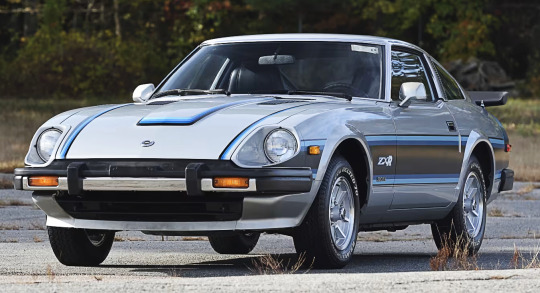




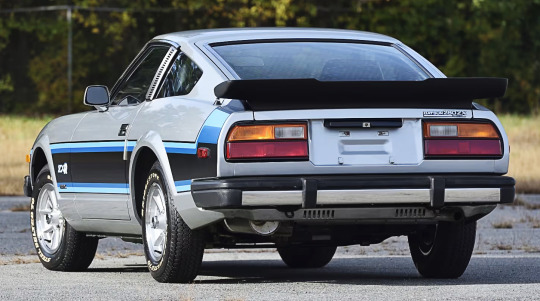
Datsun 280ZXR, 1979. One of 1001 280ZX homologation specials is to be offered at auction. What makes this car extra special is that it has travelled only 15miles since it was new 44 years ago. It was delivered new to St. Yves Motor Sales in Berkley, Massachusetts where it become part of their collection. The ZXR models came with a rear spoiler to homologate the special rear wing on its race cars. It will be offered at Mecum Auction's Kissimmee sale in January
auction listing
#Datsun#Datsun 280ZXR#special edition#homologation#1979#1970s#Z car#auction#cars for sale#low milage#dead brands
609 notes
·
View notes
Photo

Lancia Delta S4 Stradale
#lancia#lancia delta#italan cars#stradale#homologation#autos#automotive#automobiles#auto#car#cars#classic cars#vintage#vintage cars
268 notes
·
View notes
Photo



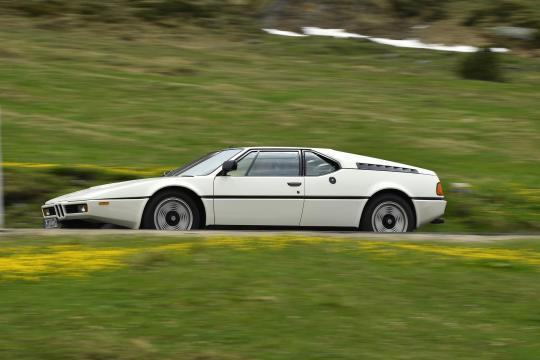

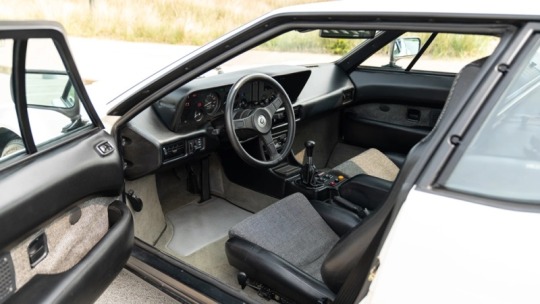

BMW M1
The M1’s history is complicated, and its impact on the Bavarian marque’s reputation was far greater than the modest production run of just 453 examples would suggest. Certainly, the M1 was a Supercar in the context of late-1970s racing technology, and that it looks like one is due to its body having been styled by Giorgetto Giugiaro, founder of Italdesign.
The M1 was developed under the aegis of BMW Motorsport head Jochen Neerpasch to compete in Group 5 racing, primarily against Porsche’s nearly invincible 911. Homologation requirements called for 400 road-going examples, and without the capacity to build the car in house, BMW partnered with Lamborghini to develop the chassis, assemble prototypes, and manufacture the production run.
Yet Lamborghini’s financial woes of the era eventually caused BMW to bring the project back in house, though Dallara designed the mid-engined, tube-frame chassis. The project soldiered on, during the course of which subsequent changes in Group 5 rules relegated the M1 to Group 4 competition. If the wedge-shaped profile of the BMW M1 recalls the 1970s-era Giugiaro aesthetic, perhaps best expressed by the Lotus Esprit, it’s because wedges, like leisure suits, were all the rage at the time. But unlike leisure suits, wedges still look cool today. One concession to tradition in the design of the M1 was the retention of BMW’s classic twin-kidney grilles in the front fascia. (Note to BMW’s designers today: bigger isn’t always better.)
Behind the driver and passenger was BMW’s 3.5-liter, twin-cam inline-six engine with mechanical fuel injection and a five-speed transmission. Making 273 hp in street tune, the mill gave the car the ability to reach about 165 mph. Inside the cockpit, occupants would not be found guilty if either felt a little short-changed of luxury, though the fabric seat inserts seem au courant today.
#art#design#sportcars#sportcar#supercars#supercar#hypercars#bmw#bmw M1#lamborghini#italdesign#luxurycars#luxurycar#vintage cars#vintage car#collector's#history#style#carsdesign
388 notes
·
View notes
Photo


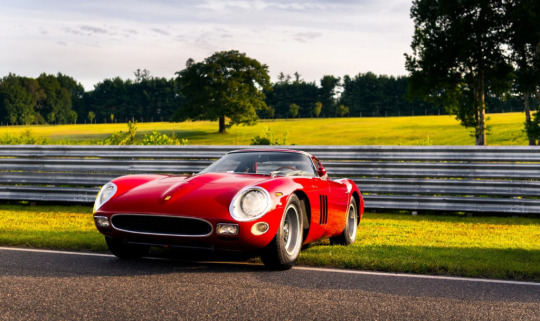
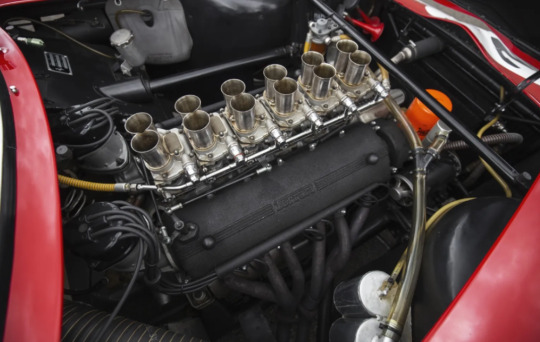
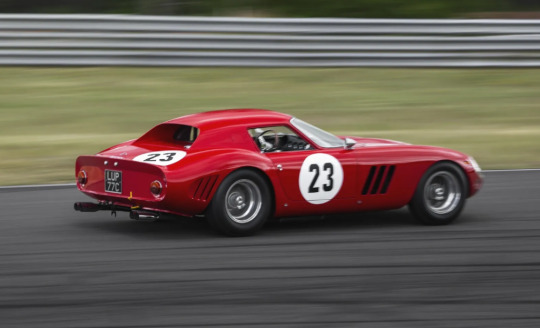
The Ferrari 250 GTO is a GT car produced by Ferrari from 1962 to 1964 for homologation into the FIA's Group 3 Grand Touring Car category. It was powered by Ferrari's Tipo 168/62 Colombo V12 engine.
398 notes
·
View notes
Text
Homologation cars Dubai-tmslogistics
A number of processes must be performed before a car can be Homologation cars Dubai, including documentation, vehicle inspections, and compliance with the RTA's technical and safety criteria. Seek the help of an experienced and competent service provider who can take you through the procedure and guarantee that all important phases are accomplished correctly.
0 notes
Photo










BMW M1 Turbo (the extraordinary case of the BMW M1 with 1000 hp)
Ignore the livery. Or don’t ignore it. Like with every other Jägermeister racing car, it might be hard to actually walk past this orange beast without giving the standout paint job at least one glance. It was designed to attract attention, just how Günter Mast — the man that gave his OK to race cars with the famous stag on the bonnet — intended. The truth of the matter is, however, that this particular car’s convoluted history is as complicated as the story of the BMW M1 itself. Therefore this car is not what it seems to be, as the orange Jägermeister livery stems from the imagination of the man that rebuilt the car, the legendary M1 whisperer Fritz Wagner. And if you ask anyone at Jägermeister headquarters about the car, they will potentially reply with a polite letter from their legal department.
To paraphrase Samuel Beckett: there’s nothing funnier than tragedy. And so, the story of the BMW M1 could be perceived as one of the automotive world’s funniest. The car was originally designed with the ambition to create the greatest, mid-engined racing car of all time. One that would beat Porsche’s dominating 935 in the all-important Group 5. A masterpiece made of speed and German reliability which, in reality, became a car that had to be reverse engineered to be sold for the road. All because of changes in racing rules and homologation, which stipulated how many cars had to be produced before a particular model was allowed to hit the track. The production number of 400 cars — which seems so minuscule by today’s standards — turned out to be the first problem on a long list of unfolding disasters.
In essence, the life of this beautiful, light, well-made machine that had been designed by Giorgetto Giugiaro, who reworked Paul Bracq’s original prototype, was plagued by bad luck and bad decisions. The fact that Lamborghini — who were supposed to produce it at their factory — went bust because of copyright fraud and embezzlement of funds didn’t help. However, it was the rushed solution to disperse production all over Europe that was the final nail in the coffin. Marchese built the car's tube frame, TIR molded the fiberglass, Italdesign mated the two and installed the interior, then the M1 was shipped from Italy to Stuttgart, where Baur would install the BMW hardware, after which in Munich BMW Motorsports would do the final touches and quality control. It made the M1 almost a quarter more expensive than any equivalent Ferrari or Lambo sold at the time. Case closed.
British generals in the second world war would often joke that Germans were not very good when it came to Plan B. This might be true. In the end, even if BMW’s head of Motorsport Jochen Neerpasch, the brilliant man that he is, thought of a way to market the M1 with the Procar series, in which F1 drivers like Niki Lauda, Clay Regazzoni, and Nelson Piquet would race the cars against privateers, as a prelude to the weekend's Formula 1 race, too few examples were made for the car to ever officially leave Group 4 as was originally intended. Later on, those teams who managed to finally race in Group 5, years after BMW abandoned the programme in order to enter to F1, found the M1 simply uncompetitive. Even the twin-turbocharged models built by Schnitzer, which developed 800 hp and more from their straight six engines, were plagued by problems.
his finally brings us to this particular, rather unusual example. It was allegedly built for the famous Walter Brun racing team, who later on won the Group C World Championship with a Jägermeister-liveried Porsche 956. Brun’s friendship with Paul Rosche, the man who turbocharged the BMW 2002, gave rise to the idea of installing the M88 turbo engine originally planned for the March Group-5 car into a modified M1 Procar chassis wrapped into Group 5 bodywork. However, the car was never raced. Why? Even at BMW no one knows.
Particularly good news considering that back in the day, when this 1090 kg machine was put on a dyno, it put out 1000 hp and 930 NM of Torque. A reading obtained just before the machine broke while the car apparently still wanted to keep going. Now in the hands of a new owner who intends to race it regularly, it will have plenty of opportunity to shine. And so a new chapter unfolds…
#BMW M1 Turbo#Jägermeister#porsche#Ferrari#lamborghini#Group 4#Niki Lauda#Clay Regazzoni#Nelson Piquet#Group 5#Walter Brun#Porsche 956#BMW 2002
205 notes
·
View notes